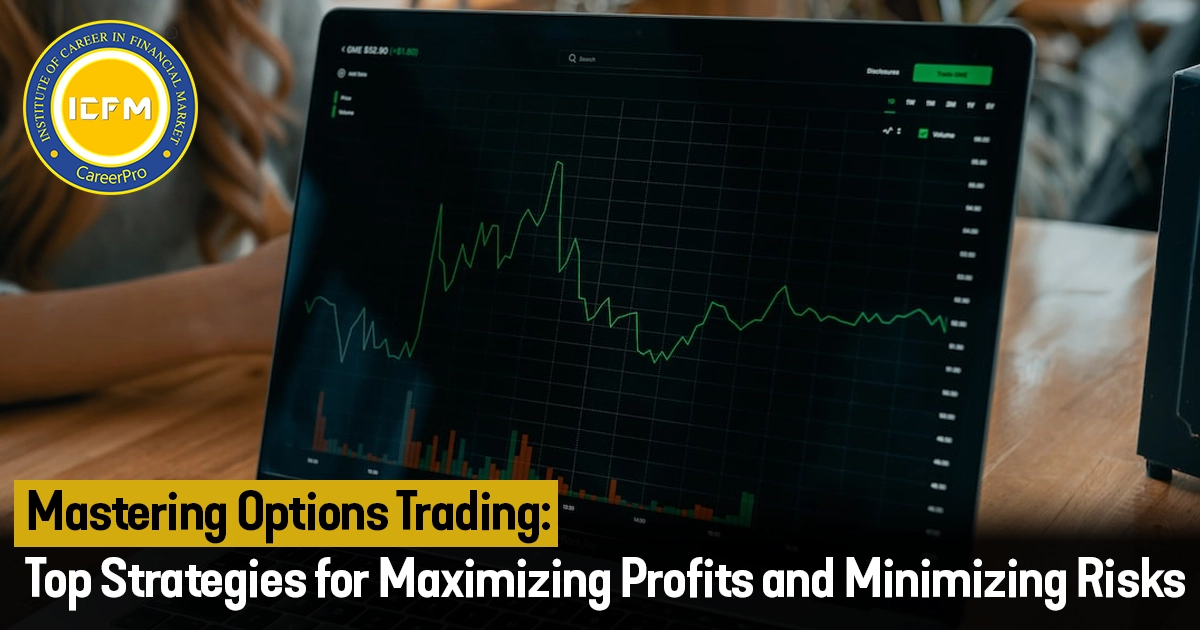When we trade in the Equity market, We can buy Equity shares for investment purposes and hold them till we want to have them in our portfolio.
Holding Equity shares gives us the Right of Dividend and Right of Voting affairs in a company, but at the same time, it always involves the risk of Losses due to price fluctuations.
Short selling in equity markets is selling shares that the trader does not currently own, with the expectation that the price will decline. The idea is to buy the shares back at a lower price in the future, thus making a profit from the difference.
How Short Selling Works
1. Borrowing Shares:
In short selling, the trader borrows shares from a broker. The broker lends the shares from its inventory or from other clients' accounts.
2. Selling the Borrowed Shares:
The trader sells the borrowed shares in the market at the current price. The proceeds from the sale are credited to the trader's account.
3. Buying Back (Covering the Short):
The trader waits for the price to drop. If the price does fall, the trader buys back the same number of shares at the lower price and returns them to the broker. The difference between the selling price and the buying price is the trader's profit.
If the price increases, the trader has to buy back the shares at a higher price which leads to a loss.
4. Returning the Shares:
The trader returns the shares to the broker, thus completing the transaction, after buying them back.
Equity Short Selling Example:
If a trader is convinced that the stock of XYZ Ltd. is trading at ₹1,000 per share is going to drop.
1. Borrow and Sell
He borrows 100 shares of XYZ Ltd. and sells the shares at ₹1,000 each, making a profit of ₹100,000.
2. Price Drops:
One week later, the stock price dropped to ₹900 per share.
The trader purchases 100 shares at ₹900 each, amounting to ₹90,000.
3. Buy Back:
The trader buys back 100 shares at ₹900 each, paying ₹90,000.
4. Profit:
The trader delivers the 100 shares to the broker and keeps the rest as his profit. Thus, a profit of ₹10,000 = ₹100,000 - ₹90,000.
Critical Considerations of Short Selling:
1. Risk is Unlimited:
Unlike buying shares, where the maximum loss is limited to the amount invested, short selling involves unlimited risk because there is no limit to how high a stock's price can rise. If the price increases significantly, losses can be substantial.
2. Margin Requirements:
Short selling usually requires a margin account. The trader has to keep a margin with the broker, and in case the price goes up, the broker may issue a margin call, which will ask the trader to deposit more money.
3. Borrowing Costs:
Borrowing shares for short selling incurs costs. These may include interest on the borrowed shares and any dividends paid out during the period the shares are shorted.
4. Short Squeeze:
If many traders have shorted a stock and the price begins to rise, they may rush to cover their positions, which causes the price to go up very fast, known as a short squeeze. This can result in big losses for short sellers.
5. Regulations:
In some markets, there are regulations and restrictions on short selling, especially during periods of high volatility. For instance, a particular exchange may impose a ban on short selling during a market downturn to prevent excessive selling pressure.
Advantages of Short Selling
1. Profit from Declines:
Short selling allows traders to profit from declining stock prices, which is not possible with traditional long positions.
2. Hedging: The short selling technique can help investors hedge against potential losses in the portfolio. For instance, an investor who holds a significant position in a particular stock might sell short the related stocks or sectors to prevent a possible downfall.
Drawbacks of Short Selling:
1. Unlimited Risk: The potential for infinite loss is a major disadvantage.
2. Market Timing: Short selling is very timing-sensitive because markets tend to rise over time, and short-term declines are unpredictable.
3. Margin Calls: The need to maintain a margin account and meet margin calls adds complexity and risk.
Conclusion:
Short selling in equity markets is a very potent tool for traders and investors. It involves a huge amount of risk; though short selling may be profitable in periods of a market downturn, its possibility of making unlimited losses renders it to be used by highly skilled and informed traders with the dynamics of markets, the management of risks, and legal conditions.
Short selling in equity markets is a strategy of selling shares that you do not own, hoping they will go down so you may buy them back at cheaper prices and pocket the remaining as your profit. Here's how it works, simplistically:
- Borrow shares: You borrow shares from anyone else through your broker
- Sell the shares: You sell such borrowed shares at the present market price.
- Wait for the Price to Fall: You wish that the price of the shares declines.
- Buy Back the Shares: Once the price declines, you purchase the same number of shares at a lower price.
- Return the Shares: You return the borrowed shares to your broker and retain the difference as profit.
Example:
Imagine you believe the stock of Company XYZ, currently at ₹100, will fall. You borrow and sell 10 shares at ₹100 each, getting ₹1,000. Later, the stock drops to ₹80, and you buy back 10 shares for ₹800. You return the shares and keep the ₹200 difference as profit.
Key Points:
- Profit if the price drops.
- Lose money if the price rises (there's no limit to how much you could lose).
- You need a special margin account for this, and it involves borrowing costs.
Short selling is dangerous because if the price goes up instead of down, you could lose a lot of money.
Shorting in derivatives is a complex trading strategy used to make money off a fall in the price of an underlying asset. It is most commonly used in futures and options markets, and it requires deep knowledge of market behavior, risk management, and margin requirements. Let's break it down into its key components:
Shorting in Futures Contracts
A futures contract is an agreement in which the trader agrees to buy or sell an asset at a set price at some point in the future. On selling short a futures contract, it means a trader sells a futures contract in which he has no ownership with the expectation of the future price of an underlying asset to fall.
1. Mechanism
Suppose a trader sells a futures contract on crude oil at $80 per barrel. If the price of crude oil falls to $70 per barrel before the contract expires, the trader can buy back the contract at $70, locking in a profit of $10 per barrel.
If the price rises to $90 per barrel, the trader would lose $10 per barrel when they close the position.
2. Margin Requirements:
Futures shorting requires a margin account that is held as collateral against potential losses. If the market moves against the trader, they may receive a margin call, requiring them to deposit additional funds to maintain their position.
3. Hedging:
Shorting futures is a common hedging activity. For instance, a farmer who expects a future harvest may short wheat futures to set a price, thereby hedging against a future decline in wheat prices.
Shorting in Options
In options, shorting can be the process of selling, writing, calling or putting options that have different implications and strategies
Selling Call Options (Naked and Covered Call Writing)
1. Naked Call Writing:
Naked call is selling a call option without owning the underlying asset. If the price of the asset increases above the strike price, the trader is forced to sell the asset at the strike price and may incur unlimited losses.
For example, if a trader sells a call option on stock XYZ at a strike price of ₹1,000 and the stock rises to ₹1,200, they are obligated to sell the stock at ₹1,000, thereby suffering a loss of ₹200 per share (minus the premium received).
2. Covered Call Writing:
In a covered call strategy, the seller sells a call option while retaining an equivalent amount of the underlying asset. This limits a trader's risk since he can give away the stock if it is exercised.
Selling Put Options
1. Naked Put Writing:
When a trader sells a put option, he is betting that the price of the underlying asset will remain above the strike price. If the price falls below the strike price, the trader is bound to buy the asset at the strike price, even if it is trading lower in the market.
For instance, if a trader writes a put option on the stock of ABC with a strike price of ₹500 and it goes down to ₹400, then the trader would have to buy the stock at ₹500, which he is not going to sell. He would lose ₹100 per share minus the premium received.
2. Cash-Secured Put Writing:
Here, the trader reserves enough cash to purchase the underlying asset in case the option is exercised. This strategy is less risky than naked put writing because it limits the risk to the difference between the strike price and the market price, minus the premium received.
Risks and Considerations
1. Unlimited Loss Potential:
In naked call writing and shorting futures, the potential loss is unlimited because there is no cap on how high the price of an asset can be.
2. Margin Calls:
In most short positions, a margin will be required. If the market is moving against a trader, they may have to add funds to their account or, worse, their position is forcibly liquidated, hopefully at a loss.
3. Time Decay:
For options, time decay is an ally to the seller. As the option nears expiry, its value drops and the seller of the option is well off if the market has moved as expected.
4. Market Sentiment and Volatility:
Shorting is highly susceptible to market sentiment. A rapid shift in the trend could mean a short squeeze, wherein prices surge due to upward momentum compelling short sellers to close their positions.
Shorting Example in Derivatives
Scenario: Shorting Nifty Futures
Suppose the Nifty 50 index is at present 18,000 points and a trader believes that within the short term, this index will drop. The trader sells one Nifty futures contract at 18,000.
If the Nifty 50 declines to 17,500, the trader can close the position by buying the contract back at 17,500, realizing a profit of 500 points (each point has a specific monetary value, depending on the contract).
However, if the Nifty 50 increases to 18,500, the trader loses 500 points, which could be quite significant depending on the size of the contract and the leverage used.
Conclusion
Shorting in derivatives is very high-risk, with high reward, and requires careful consideration of the market conditions, managing the risk, and margin requirement. Though it can be profitable when there is a bearish market, the potential for huge loss means that traders must always have a well-thought plan and be able to react to change quickly in the market.









